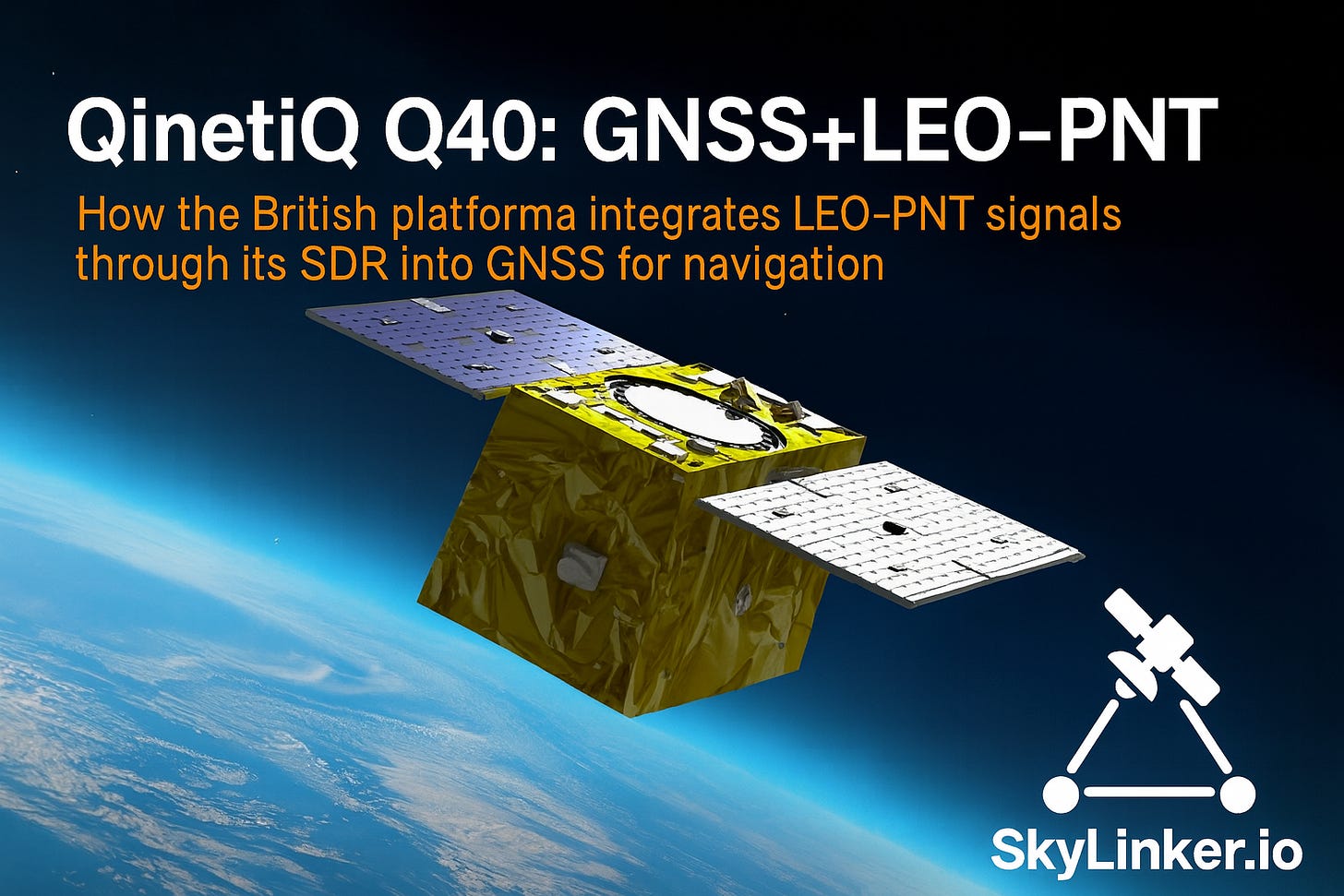Review of QinetiQ Q40: GNSS + LEO-PNT
How the British platform integrates LEO-PNT signals through its SDR into GNSS for navigation
Classical GNSS systems (GPS, Galileo, etc.) remain at the core of global navigation, but their vulnerability to jamming and spoofing is becoming increasingly obvious. It is precisely the addition of LEO-PNT functionality in the Q40 receiver from QinetiQ that caught our attention: this is an example of how modern hardware combines traditional systems with a new generation of signals to ensure PNT resilience in the future.
What makes Q40 special
At first glance, Q40 is an “ordinary” GNSS receiver. In fact, it is a platform built for modern threats in the radio spectrum.
It simultaneously works with several systems: GPS, Galileo, GLONASS, BeiDou, and SBAS (Satellite-Based Augmentation System — satellite-based accuracy augmentation systems). It is possible to enable or disable individual signals depending on their quality.
Keep reading with a 7-day free trial
Subscribe to SkyLinker to keep reading this post and get 7 days of free access to the full post archives.


